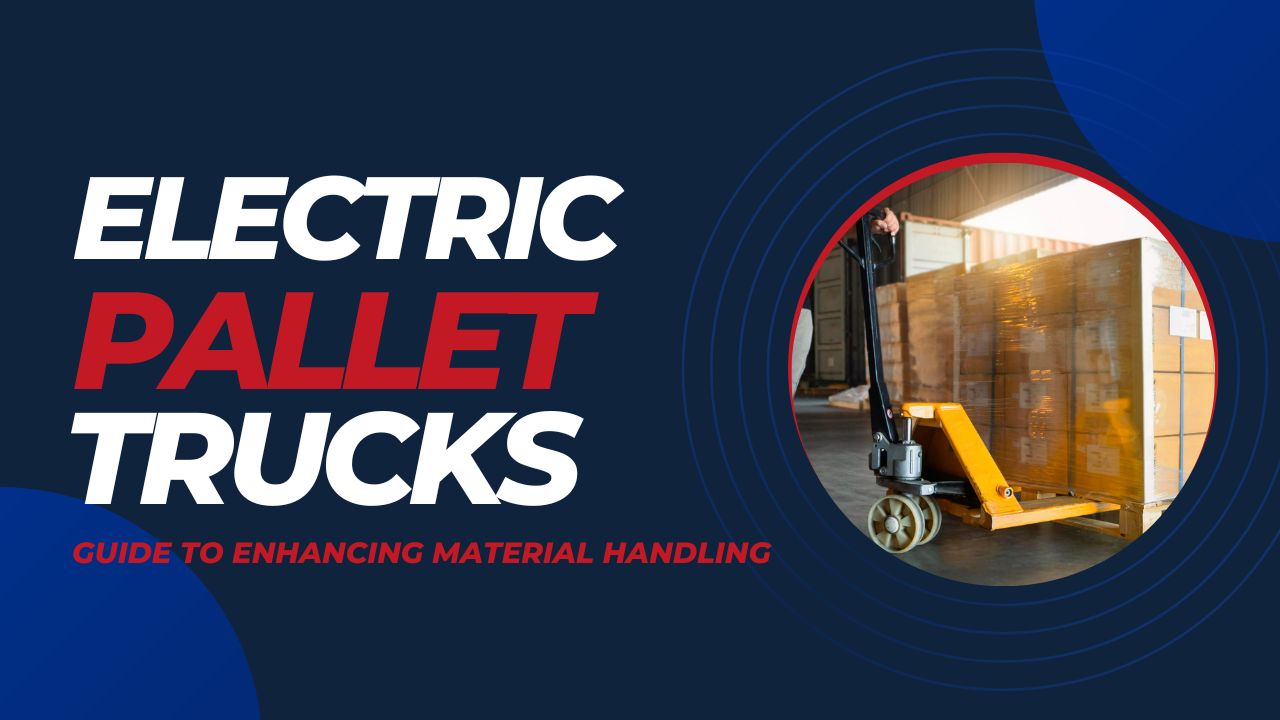
BCCM’s Guide to Enhancing Material Handling with Electric Pallet Trucks and Stackers
With the increasing demand for efficiency and sustainability in warehouse operations, electric pallet trucks and stackers have become an essential piece of equipment. These modern solutions enable businesses to optimize their material handling processes while reducing operational costs and promoting a greener work environment. In this article, we will provide a comprehensive overview of electric pallet trucks and stackers, covering key features, benefits, and best practices.
For over nine decades, our expertise has been centered around providing, maintaining, and servicing a diverse array of material handling equipment, including forklift trucks, narrow aisle reach trucks, pallet jacks, stock chasers, tugs, tow tractors, electric vehicles, dock levelers, and elevating docks. Our extensive inventory at BCCM includes both new and pre-owned equipment, with the latter predominantly sourced from our local clientele and our own rental fleet. Boasting one of the largest forklift rental fleets in British Columbia, we offer flexible rental options, rent-to-own programs, and lease arrangements to cater to our customers’ diverse needs.
What Are Electric Pallet Trucks and Stackers?
Electric pallet trucks and stackers are battery-powered material handling devices designed to transport and lift palletized goods. They come in various models and capacities, ensuring that there is a solution for every warehouse need. Electric pallet trucks are primarily used for horizontal transport, while electric stackers provide both horizontal transport and vertical lifting capabilities.
Key Features of Electric Pallet Trucks and Stackers
- Power Source: These machines utilize rechargeable batteries, most commonly lithium-ion or lead-acid, which deliver consistent power and allow for extended periods of operation between charges.
- Load Capacity: Electric pallet trucks and stackers come in various capacities, ranging from 1,000 to 6,000 pounds, to accommodate different load sizes and weights.
- Maneuverability: Compact designs and tight turning radii make these machines highly maneuverable, allowing operators to navigate narrow aisles and tight spaces with ease.
- Lift Heights: Electric stackers are available in various lift heights to suit different warehouse storage requirements. Some models can reach heights of over 20 feet.
- Control Options: Electric pallet trucks and stackers offer various control options, including walk-behind, ride-on, and remote control, depending on the specific model and application.
Benefits of Electric Pallet Trucks and Stackers for BCCM
One of the main advantages of using electric pallet trucks and stackers is the increased efficiency they bring to material handling processes. By significantly reducing manual labor, these machines enable faster and more efficient operations, which can ultimately lead to higher productivity and profitability. Additionally, electric pallet trucks and stackers have lower energy consumption compared to their internal combustion engine counterparts, resulting in reduced operating costs.
Another notable benefit is their environmentally friendly nature. As battery-powered machines produce zero emissions, they contribute to a greener work environment and a reduced carbon footprint, aligning with modern sustainability goals. Furthermore, electric pallet trucks and stackers are equipped with advanced safety features, such as automatic braking and emergency stop buttons. These features help reduce the risk of accidents in the workplace, promoting a safer environment for employees.
Electric machines operate at significantly lower noise levels compared to traditional forklifts. This provides a quieter and more comfortable work environment for employees, reducing the likelihood of noise-induced hearing loss and fostering better communication between team members. Overall, the adoption of electric pallet trucks and stackers offers numerous benefits to enhancing efficiency, sustainability, safety, and employee well-being.
Best Practices for Using Electric Pallet Trucks and Stackers
Proper Training: Ensure that all operators receive comprehensive training in the use, maintenance, and safety procedures of the specific electric pallet truck or stacker model they will be operating.
Regular Maintenance: Perform routine maintenance on your machines, including checking for worn or damaged parts, battery health, and tire condition. This will help prolong the life of your equipment and ensure optimal performance.
Appropriate Load Handling: Always adhere to the manufacturer’s guidelines regarding load capacity and lifting heights. Overloading or improperly lifting loads can lead to equipment damage and pose safety risks.
Safe Charging Practices: Follow the manufacturer’s recommendations for charging and battery maintenance. Provide designated charging areas that are well-ventilated and free from potential hazards, such as flammable materials.
Implement a Traffic Management Plan: A well-structured traffic management plan can minimize the risk of accidents between pedestrians and material handling equipment. Consider implementing clearly marked pedestrian walkways and designated operating zones for your electric pallet trucks and stackers.
Electric pallet trucks and stackers are an invaluable addition to any warehouse, offering increased efficiency, reduced operational costs, and a more sustainable work environment. Moreover, by implementing best practices for the use and maintenance of electric pallet trucks and stackers, businesses can maximize the lifespan and performance of their equipment, creating a safer and more productive workplace for all. As the material handling industry continues to evolve, adopting these advanced solutions will enable you to stay ahead of the curve and maintain a competitive edge in the market! Give us at BCCM a call at 1-800-814-1406 today!

